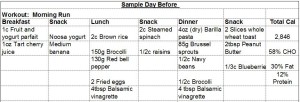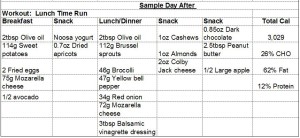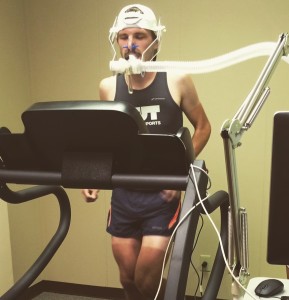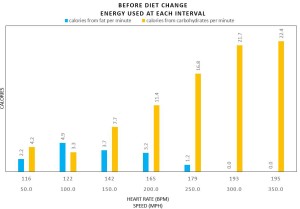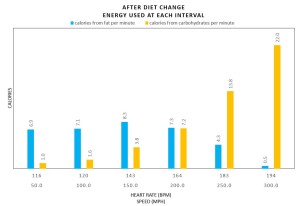Fat For Fuel? The Grand Experiment!
By Michael Raynor, Intern, Cat 2 Cyclist and all around OK guy
Headed into this experiment, I was pretty apprehensive. I’d always heard, read, and thought that athletes needed lots of carbs to survive and be successful. After all, all of our efforts during workouts and races are to prolong glycogen stores to keep from hitting the wall and bonking; we only store about 2000 calories of energy as glycogen. The thought process behind this experiment being, what if we can bypass glycogen stores altogether and teach our bodies to rely on fat as the primary fuel source? This is a pretty grand question, but the resulting hypothesis being that, even in lean athletes, we’re looking at an energy pool of 40,000+ calories stored as fat as opposed to only 2000 calories from glycogen; if we can teach our bodies to rely on fat for fuel, we could tap into a plethora of energy already stored in our bodies!
Quite a bit of research has been done looking at ketogenic (very low carb) diets in athletes to explore this same question. This experiment was done to see if a similar effect could be achieved with a less strenuous, more easily achievable dietary change that doesn’t induce ketosis (a metabolic state which forces the body to switch away from carbs as primary fuel source).
Before the experiment, about 55-60% of my calories came from carbohydrates, 10-15% from protein, and about 25-30% of my calories came from fat.
For the experiment, we swapped carbs and fat. This made the experimental diet about 55-60% of calories from FAT, 10-15% from protein (still), and 25-30% from carbohydrates.
In what can only be claimed as one of my best strategies to avoid holiday weight gain, I started the experimental diet the week of Thanksgiving. I was surprised at how attainable and easy it was to swap carbohydrates to fat.
The biggest change was to swap my snacks to higher fat options. I incorporated more cheese and avocado. The biggest kicker in the process of adapting to this new diet was my own mind–I thought carbs would be hard to give up, therefore they were.
The first day was the worst. I craved carbs all day long. The second day was a little easier. By the fourth day I was only getting periodic cravings for carbs. It is worth noting, that I slept pretty poorly the first few days of the diet. I have no proof, so I can’t assume this is a result of the dietary changes. It may be merely coincidental, but noteworthy nonetheless.
We did a baseline VO₂ Max test. This was to look at the distribution of carbohydrates and fat that I was burning for energy going from really low intensity up to all out efforts.
The next VO2 Max test was done about 3 weeks after the baseline test. The graphs below show the pretty drastic change resulting from experimental diet. In the graphs, the blue shows calories from fat burned per minute and the yellow shows calories from carbohydrates burned per minute. . The rate of fat oxidation more than doubled at most data points. I was really impressed since I was skeptical that there would be much change.
I was blown away by the results!
These impressive results and my feelings during workouts and recovery have been motivation to keep eating a high fat diet. That’s right, even 3 months later, I still haven’t returned to my high carb diet! On this diet, I feel like I can hold a higher intensity for longer.
I’m currently training for a PR at my next half marathon, Tobacco Road Half Marathon. At the end of my longer workouts, I don’t feel like I’m running out of energy like I did on the high carb diet. I also feel like I benefit surrounding hard intensity workouts too. At those super high, race pace intensities, I feel a little sluggish compared to my original diet, but my efforts haven’t suffered and my pacing has been steadily improving–I just FEEL like I’m suffering a bit more.
Almost every run I go out on, I see improvement; each week I’m running just a little harder and faster. While a lot of this is training effect, I’m seeing improvement at a greater rate than before.
I’m also seeing benefits from the diet in my ability to recover. A huge part of recovery for athletes is working to replenish glycogen stores that have been depleted by a hard workout or race. On this diet, I’m able to do hard workouts closer together and I don’t feel as worn down.
I’ve been able to put in bigger blocks with more miles, more hard workouts, and even a few extra speed sessions without having to leave as big of a recovery gap before the next big/hard workout.
Overall, I was blown away by how easy the diet was to implement, how great I felt on it, and how big of a difference it made on fat vs carbohydrate utilization during exercise. There’s a small voice in my head that keeps wondering when I’ll switch back to my original diet, but after having seen the results and knowing how good I feel now, I’m not sure I’ll switch back.
